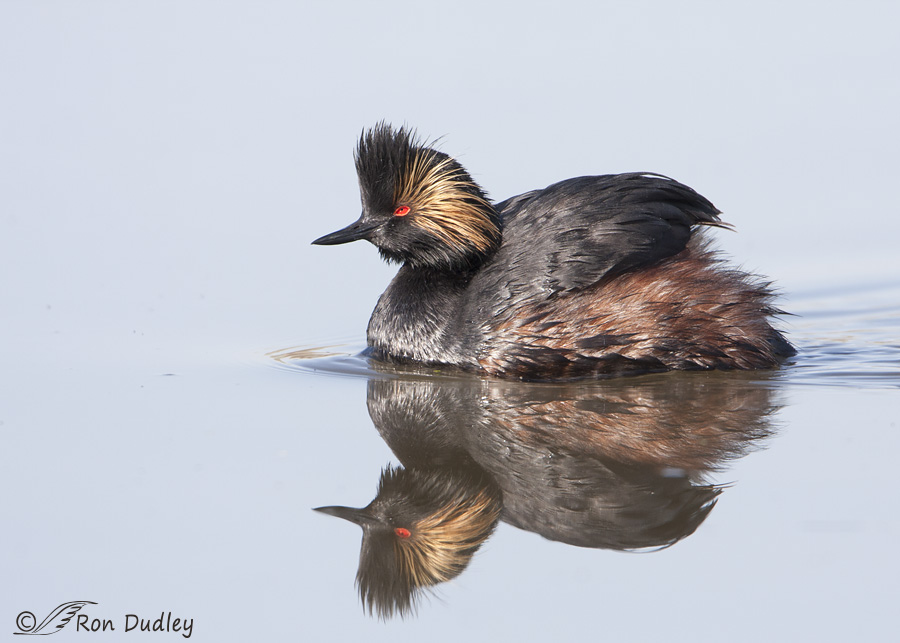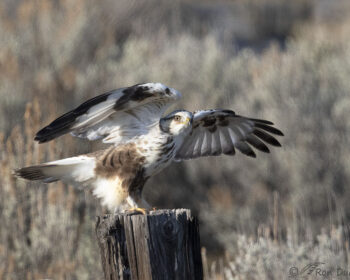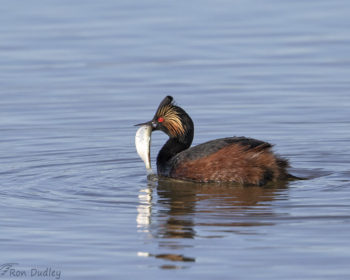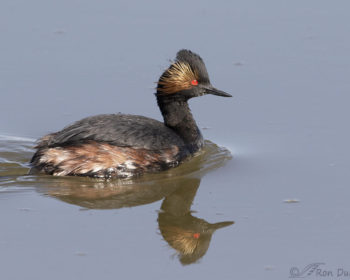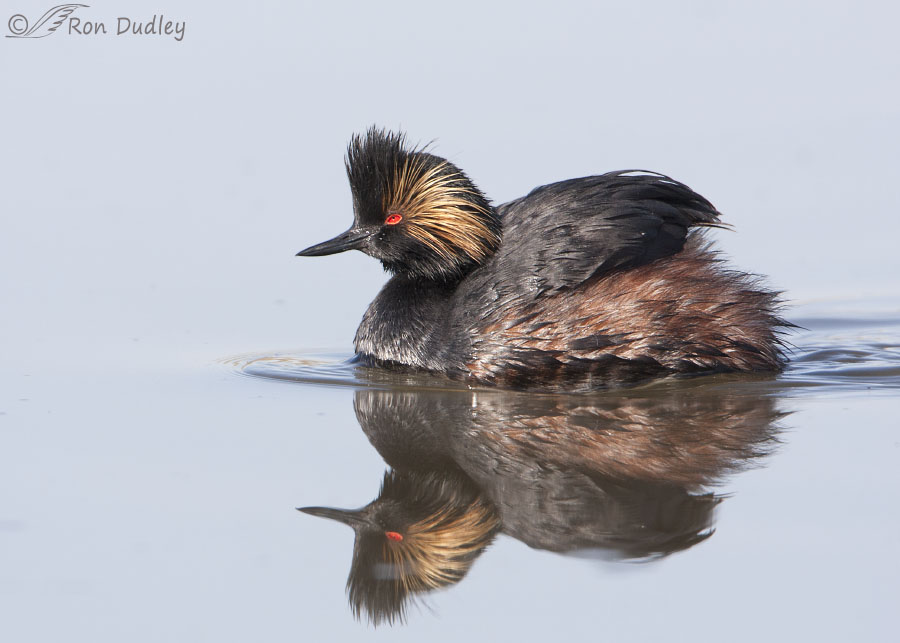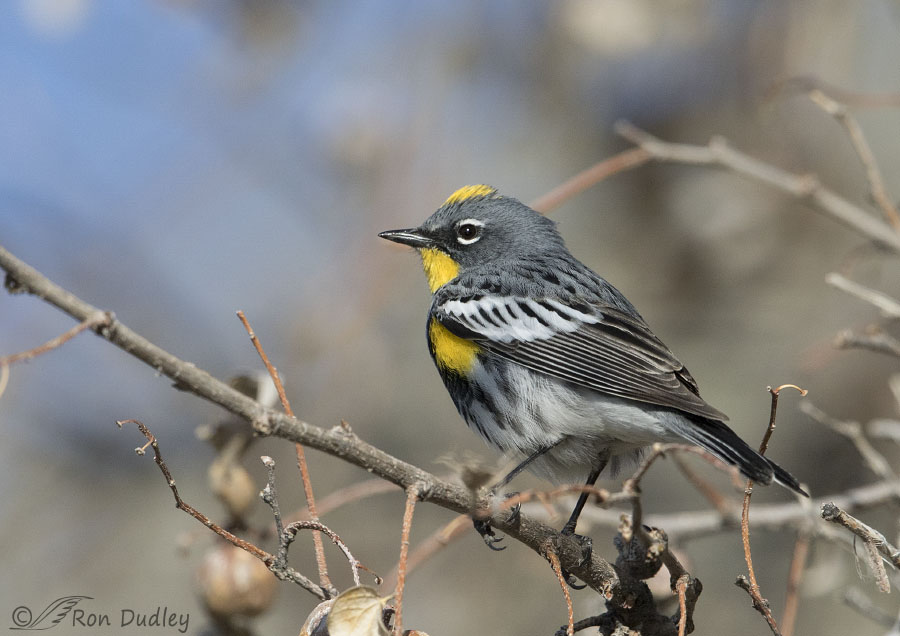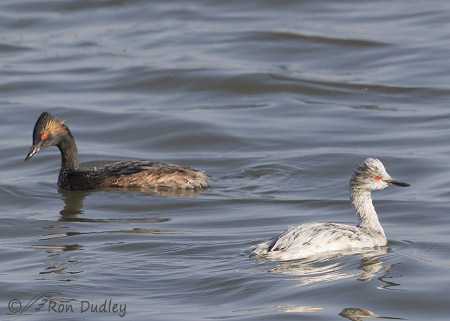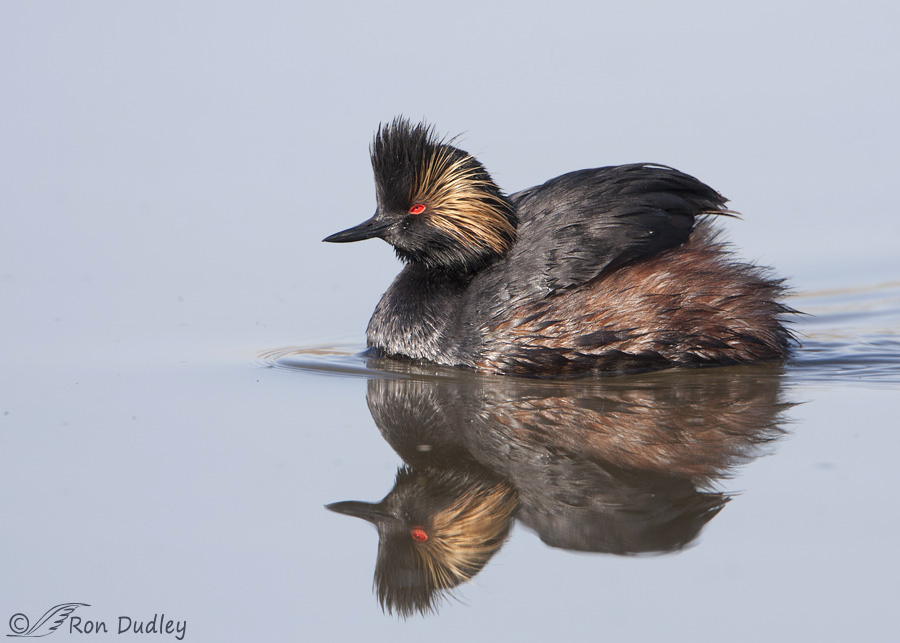Tag: eared grebe
Some Recent Birds
Eared Grebe – An Unusual Feeding Behavior
A Bird Sampler From Bear River MBR Six Days Ago
Eared Grebe Swimming On A Mirror
A Potpourri Of Recent Birds And Critters
Multiple Leucistic Eared Grebes Along The Antelope Island Causeway
The Bizarre Biology Of The Eared Grebe
Eared Grebes On Glover Pond
A Clumsy Bald Eagle With (and then without) Prey
The occasional Bald Eagle lurks near the west end of the Antelope Island causeway for good reason – lots of potential prey. The open water near the bridge attracts a variety of waterfowl so falcons and eagles are sometimes seen in the area.
Eared Grebes In Utah
Eared Grebes are the most abundant grebe on the planet and immediately after the breeding season most of the population on this continent migrates to either Mono Lake, California or the Great Salt Lake in my back yard where they feed on brine shrimp and brine flies. 1/800, f/7.1, ISO 500, 500 f/4, 1.4 tc Most of the grebes that I see are on the Great Salt Lake where it’s difficult to get quite close enough to them for photography purposes but occasionally I’ve seen them on smaller ponds where they’re attracted by insect hatches. 1/400, f/8, ISO 500, 500 f/4, 1.4 tc The eye of this species is incredibly red, almost unbelievably so. Just to be clear, I’ve not applied any saturation to these photos. 1/800, f/7.1, ISO 500, 500 f/4, 1.4 tc These birds are tireless feeders and divers. In scientific studies it’s estimated that they consume between 8,000 and 70,000 brine shrimp per day. That’s a lot of diving! 1/1600, f/8, ISO 500, 400 f/4, 1.4 tc When there’s an insect hatch they feed on the surface and as they scurry from bug to bug they’re very difficult to follow because of their quick turns and amazing swimming speed – it can be almost as challenging for the photographer as photographing small birds in flight. Here the grebe has spotted a floating midge on the left… 1/1600, f/8, ISO 400, 500 f/4, 1.4 tc approaches the midge very quickly… 1/1600, f/8, ISO 400, 500 f/4, 1.4…
Why Grebes Eat Feathers
Grebes, as a group, are known for eating feathers – usually their own. The obvious question is – why? There would be virtually no nutritional value in a feather. Clark’s Grebe eating a feather I’ve photographed four species of grebes – Western Grebe, Clarks Grebe (these two are very similar), Pied-billed Grebe and Eared Grebe. I’ve been able to document feather eating in all but the Eared Grebe. Western Grebe parent feeding feather to young Over a period of perhaps a half hour I watched this adult feed several feathers to the chicks, who seemed almost as eager to consume the feathers as they did the fish provided by the parents. Western Grebe chick reaching for a feather from its parent Feathers are fed to the young almost immediately after hatching. In fact, feathers are very often the first item eaten by newly hatched chicks of many grebe species. The purpose(s) of feather eating is unproven but evidence suggests that the behavior has these benefits for the birds. Some of the ingested feathers form a plug in the pylorus, between the stomach and small intestine, which acts as a strainer to keep fish bones in the stomach long enough to be completely digested. Most swallowed feathers end up in the stomach lumen, mixed with food. They eventually (along with any indigestible matter) form pellets that are ejected through the mouth. The continuous passage of these pellets through the upper digestive system minimizes the buildup of a variety of parasites that are very common there and plague grebes. Pied-billed…
Photographing Birds on Antelope Island
My previous post was an overview of the geology of Antelope Island and its non-bird wildlife. Here, I’ll focus on its birds. Juvenile Loggerhead Shrike begging for food Loggerhead Shrikes are common on many parts of the island during summer. They can be a challenge to approach but those few that nest close to the road eventually get used to traffic so if you photograph from your vehicle you can often get quite close. Here this juvenile was begging for food that was being delivered by a parent just out of frame to the left. Loggerhead Shrike with dragonfly Shrikes are often called “butcher birds” for their practice of temporarily impaling their prey on thorns or other sharp projections. This juvenile had done just that with the dragonfly but it wasn’t very good at it yet and in the end just decided to eat it instead of store it away. Loggerhead Shrike with spider Shrikes are opportunistic carnivores known to feed on insects, spiders, amphibians, small reptiles, rodents and other birds. This one also attempted to impale the prey before eating it. Juvenile Burrowing Owl practicing its parallax technique on me Burrowing Owls are one of my favorite species on the island though they can be difficult to locate from year to year as they often don’t seem to nest in the same burrow the next year. In the summer of 2009 there was an entire family of owls along the causeway to the island nesting under concrete rubble, as in the…


